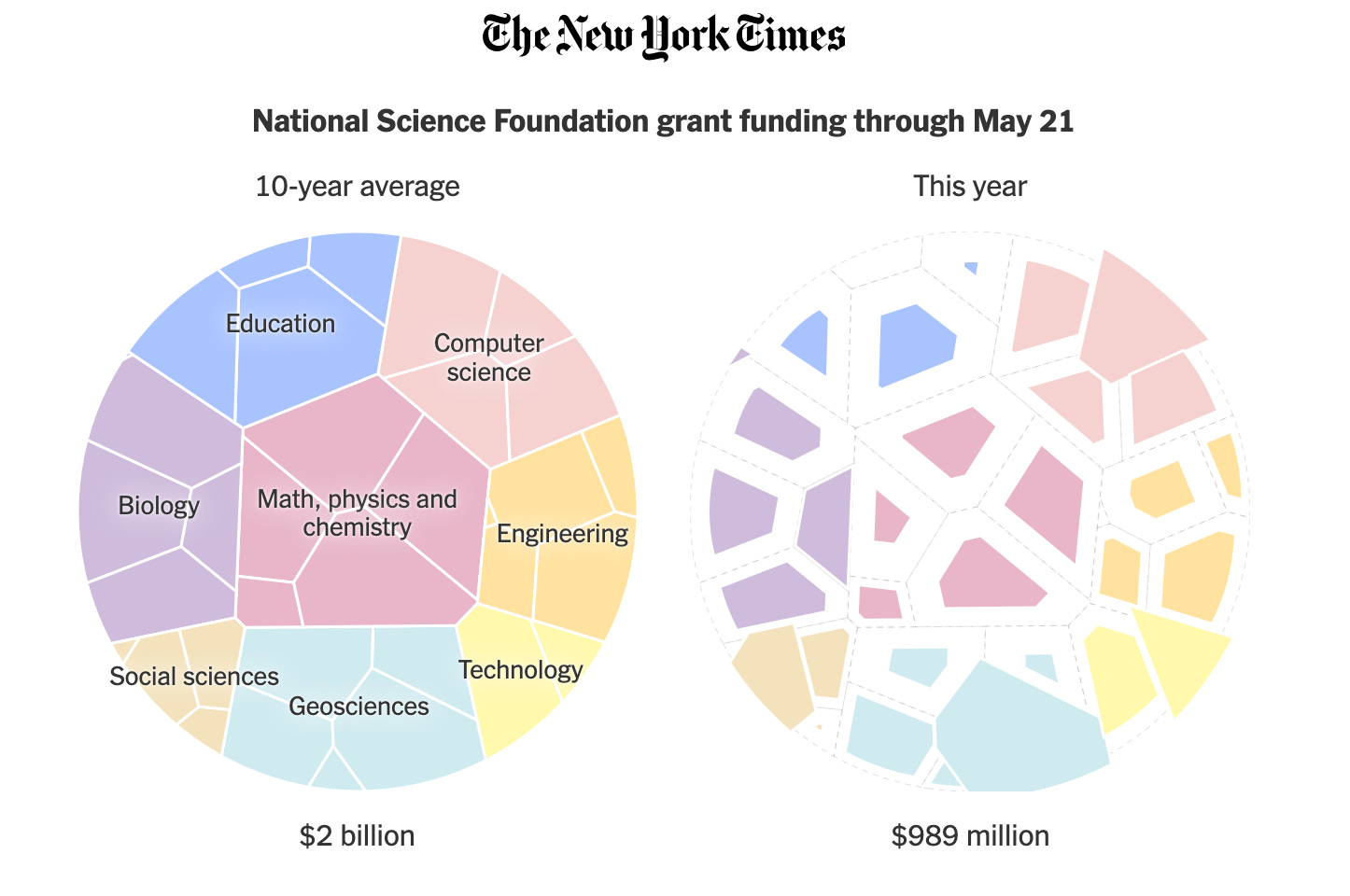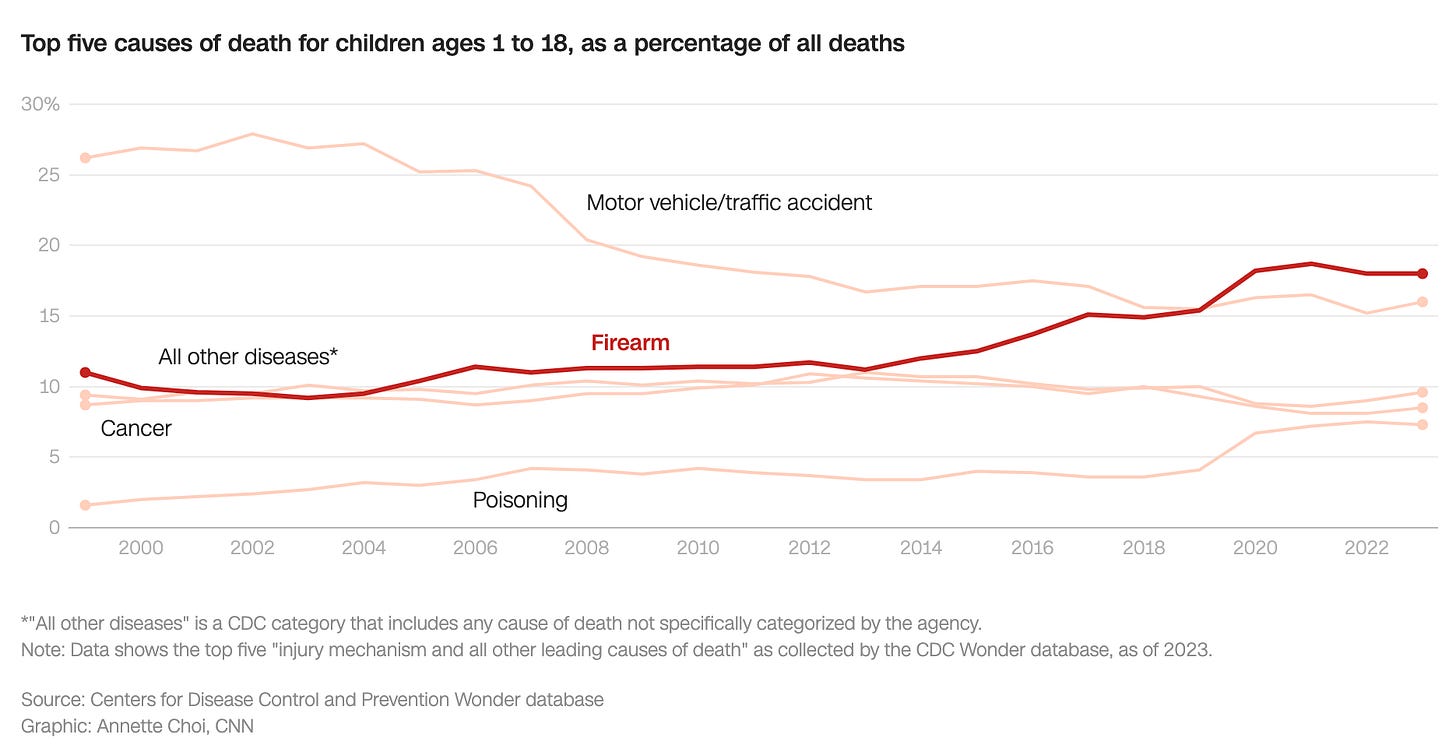The MAHA Report's Missing Children
A weird and twisted document that depicts kids as pathologies

Victor, a boy with autism and cerebral palsy, was shot and killed by police in his front yard. An 11-year-old girl was deported while recovering from brain surgery. A speeding driver killed four-year-old Pinchas’s mother and sisters in a crosswalk; he survived the crash badly injured. Raven, fearful of and depressed by rising trans hate, has dropped out of high school. Cancer survivor Violett, an active toddler, lives in motels, her family burdened with medical debt.
These are a few of the American children missing from The MAHA Report, released last week by the Trump White House.
What’s in the report
In the report, which media outlets have aptly called “dark” and “grim,” America’s children are their pathologies. They are obese, diabetic, cancer-stricken, neurologically disordered, depressive, and allergic. They've become so at the hands of a host of villains—including food, drug, and chemical companies, social media, and researchers and regulators.
Much in the report is legitimately alarming. On average, American children—like American adults—get insufficient exercise, spend a lot of time on screens, eat much unhealthy food, and are under stress. American children—like American adults—are exposed to innumerable environmental toxins. The report points repeatedly to a corrupt relationship between powerful corporate interests and the government. And if that was all there was, we might be grateful.
But as Philip A. Loring of The Nature Conservancy highlights, the valid criticisms and claims in the report provide cover for its insinuations, omissions, and contradictions:
The Trojan Horses in this report are very good ones. There are lots of people, including me, who are rightly concerned about chemical pesticide and herbicide use in agriculture. And there are sentences in here very similar to ones I’ve written on this topic. There are also lots of people, including me, concerned with the fact that microplastics are showing up in our brains and reproductive organs. Or who are concerned with the plummeting health statistics of the US compared to other developed nations.
The truths, Loring argues, help make The MAHA Report perilous propaganda.
The sections that can set heads nodding lend credibility to others in which HHS head Robert F. Kennedy Jr. indulges his pet conspiracy theories. RFK Jr. has described people with autism in inaccurate and deeply dehumanizing ways and has spread dangerous, debunked theories that vaccines could cause autism. On the occasion of the report’s release, Trump insinuated the same, stating, “It has to be something on the outside, has to be artificially induced, has to be.”
The Associated Press explains that “without evidence that it’s warranted”, the report calls for “increased scrutiny of childhood vaccines — credited with saving millions of people from deadly diseases.” Johns Hopkins’s Dr. Amesh Adalja told the AP, “‘It’s not as if they’re positing any kind of causal link…[RFK Jr.] is trying to devalue vaccines in the minds of Americans.’”
The report’s veneer of reasonableness is pierced by various MAGA resentments and hatreds. SNAP food benefits, school lunches, and food pantries are depicted as worse than wasteful, pushing non-nutritious foods on kids. Trans health care is smeared as brutal child abuse—“Child Chemical and Surgical Mutilation”—despite research showing how gender-affirming care saves young lives.
And while certain industries can’t be trusted, MAHA broadcasts, neither can the government as it is nor can the medical or scientific establishment. Only MAGA, with its “gold-standard scientific research,” can be the font of knowledge. Cuts to existing health programs and science research then are more than justified.

Then there are certain parents MAGA can’t trust to do the right thing by their children—parents implicitly blamed for leaning on welfare, feeding their kids crap, letting them rot in front of screens, and rushing to doctors to get pills for them to pop.
What’s not in the report
The report opens with a copy of the EO establishing the Make America Healthy Again Commission, the focus of which is the “chronic childhood disease crisis.” This is a convenient mission for the group, allowing it to completely ignore the leading killers of US children: guns and motor vehicles.

It allows for ignoring the number one cause of injury to children: "Nearly 150 children ages 0 to 19 are treated every hour in U.S. emergency departments for crash-related injuries.” It allows for ignoring how children suffer from anxiety, depression, and other mental health issues as a result of gun and traffic violence.
So as the report holds some industries to task, it lets the firearm, auto and fossil fuel industries off the hook. Air pollution makes an appearance, but its sources go unnamed. A major childhood chronic disease caused and worsened by air pollution is barely noted: asthma, which affects nearly 5 million US children. Reading MAHA’s report, you might think overmedicating for asthma, a leading cause of missed school days, is a far bigger problem than the disease itself.
And of course climate change is not worth discussing in the context of children’s health despite how extreme heat and cold, air quality, more violent storms, drought, flooding, and infectious diseases all impact it in serious ways.
Though agricultural chemicals are identified in the report as a potential threat, the greatest expressions of love in the report go not to America’s children, but to America’s farmers and agribusiness, the heart of MAGA’s base. In fact, agrichemicals are referred to as “crop protection tools,” a big wink-wink to the industry. It is food processors who are ruining the “healthy” foods produced in “abundance” by America’s beloved farmers, who “are at the center of how we think about health.”
Missing: Children
Not at that center: children.
In fact, the report defines its purpose as protecting “tomorrow’s workforce, caregivers, and leaders.” Chronic childhood diseases are also a crisis, it tells us, because they make three-quarters of young people unfit for military service.
In this way, the MAHA Commission is pretty straightforward about how it sees children. Not as individual human beings deserving of full and happy lives. Not as citizens and residents deserving of a society and government that protects them because they are children and thus vulnerable.
This shouldn’t be a surprise. In the MAGA worldview, not all Americans under 18 get to be children. If their families need income, they can work in hazardous jobs. If they can become pregnant, they can be forced to have children. If they are Black, they can be treated like adults in schools and in the justice system.

Along with taking care to broadcast to corporations that any regulations arising from the report will be mild, MAHA is careful to reassure the public that it isn’t “woke.” The data on the crisis is presented without breakdowns by subgroup, except sometimes gender. When boys are suffering most, the report makes sure we know about it.
MAHA studiously avoids identifying the groups of children who are the worst off under our current food and healthcare systems: children of color, migrants, LGBTQ+ youth, homeless children, the disabled, the un- and under-insured, and those living in lower-income households and neighborhoods. Again, it blames rather than lauds existing government programs helping these children.
Who’s missing from this report? Children such as Liam, a hockey player, food pantry volunteer, and history buff who has autism. Children such as 14-year-old cancer researcher and med student Alena. Children such as Kaliko, who lost her home in a wildfire and joined with other Hawaiian youths to sue the state over its fossil fuel use.
The most important thing missing from The MAHA Report is children, the young people growing up in this world we’ve made for them.




